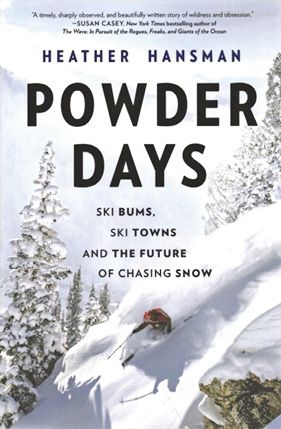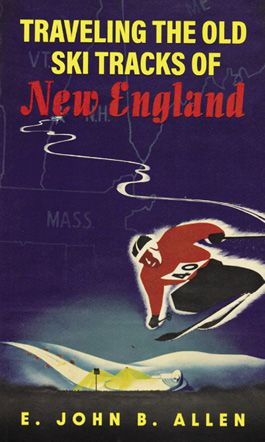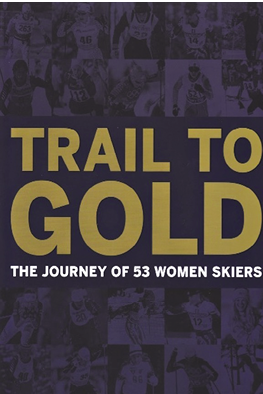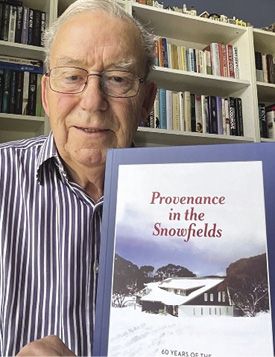Powder Days: Ski Bums, Ski Towns and the Future of Chasing Snow
By Heather Hansman
 As rich people evict poor people from ski-town digs, writers have mourned the fate of the ski bum since the late 1960s, in magazine articles, books and films. Heather Hansman is one of those ski bums forced to write for a living (not necessarily a career advancement), and she does so with talent and perception. In Powder Days: Ski Bums, Ski Towns and the Future of Chasing Snow, Hansman dissects the ski bum phenomenon, finding it the source of the sport’s authenticity, and traces its history. Then she brings the story up to date. She focuses on the time-honored themes (static wages, soaring real estate and rental prices, the erosion of social status for those who work on the mountain), then examines the 21st-century threats to bummage: corporate monopoly and a price structure that bars entry to the sport, absentee management, even climate change. It’s a great read, full of colorful characters and stories, heroes and villains. You’ll come away understanding why the mood of today’s ski bum (unless they've inherited grandma’s ski-town Victorian) is more likely to be frustration and rage than exhilarated delight. —Seth Masia
As rich people evict poor people from ski-town digs, writers have mourned the fate of the ski bum since the late 1960s, in magazine articles, books and films. Heather Hansman is one of those ski bums forced to write for a living (not necessarily a career advancement), and she does so with talent and perception. In Powder Days: Ski Bums, Ski Towns and the Future of Chasing Snow, Hansman dissects the ski bum phenomenon, finding it the source of the sport’s authenticity, and traces its history. Then she brings the story up to date. She focuses on the time-honored themes (static wages, soaring real estate and rental prices, the erosion of social status for those who work on the mountain), then examines the 21st-century threats to bummage: corporate monopoly and a price structure that bars entry to the sport, absentee management, even climate change. It’s a great read, full of colorful characters and stories, heroes and villains. You’ll come away understanding why the mood of today’s ski bum (unless they've inherited grandma’s ski-town Victorian) is more likely to be frustration and rage than exhilarated delight. —Seth Masia
Powder Days: Ski Bums, Ski Towns and the Future of Chasing Snow, by Heather Hansman. Hanover Square/Harper-Collins, New York (2021). 272 pages. Hardcover $23.99, paperback $18.99, Kindle $15.99.
Traveling the Old Ski Tracks of New England
By E. John B. Allen
 John Allen has written about the culture and practice of skiing around the world, but his latest work, Traveling the Old Back Roads of New England, is focused on his own New England.
John Allen has written about the culture and practice of skiing around the world, but his latest work, Traveling the Old Back Roads of New England, is focused on his own New England.
A short introduction to current Alpine skiing nomenclature such as snowsports centers, snow guns, base lodges, giant condo developments and $150-a-day lift tickets, to name just a few, leads back in time to the initial influence of the Norwegian immigrants in ski jumping and ski manufacturing, and the role of well-to-do students at Dartmouth and other New England colleges in adopting the Germanic approach to Alpine skiing.
The problem for a reviewer of the book is that there is such a wealth of information that it is difficult, if not impossible, to summarize it in any meaningful way. Hundreds of individuals make appearances and ski clubs and skiing competitions abound.
To take just one example: Alpine skiing increased dramatically in the 1930s. The growth in Alpine skiing domestically is very well presented, including the role of the Boston & Maine Railroad snow trains, the development of numerous regional ski areas such as Cannon Mountain, the first indoor consumer winter sports shows and much more.
The strong domestic growth in Alpine skiing also led to the arrival of a number of talented central European Alpine instructors and, eventually, to the arrival in North Conway of Hannes Schneider and his wife on February 11, 1939 (the latter step being presented in much more detail in the “Schneider Phenomenon” chapter).
In short, Allen’s book opens the door to stroll through the ski history of New England all the while under the guidance of the country’s foremost ski historian. I am confident that copies of this book will soon find their way into homes throughout New England’s snow belt. —Einar Sunde
Traveling the Old Ski Tracks of New England, by E. John B. Allen. Bright Leaf/University of Massachusetts Press, Amherst (2022). 320 pages. Hardcover $90, paperback $24.95, Kindle $19.99.
Trail to Gold: The Journey of 53 Women Skiers by the U.S. Women Cross-Country Skiers 1972–2018
Edited by Sue Wemyss
 This important and handsome book chronicles the challenging journeys of 53 American women cross-country ski racers over a period of some 50 years, from the 1972 Sapporo Winter Olympics in Japan, when the U.S. fielded its first Olympic XC Team, to the 2018 Pyeongchang Winter Olympics in South Korea, when the team’s Kikkan Randall and Jessie Diggins won the United States’ first Olympic gold medal in cross-country skiing in the Women's team sprint free event.
This important and handsome book chronicles the challenging journeys of 53 American women cross-country ski racers over a period of some 50 years, from the 1972 Sapporo Winter Olympics in Japan, when the U.S. fielded its first Olympic XC Team, to the 2018 Pyeongchang Winter Olympics in South Korea, when the team’s Kikkan Randall and Jessie Diggins won the United States’ first Olympic gold medal in cross-country skiing in the Women's team sprint free event.
The original idea for this history came from the team’s coach, Matt Whitcomb, who suggested to the 2013–14 team that they contact and interview their sister Olympians of earlier Games while the golden opportunities still existed—and that a book might result. The process began and valuable interviews were recorded and transcribed, but after a period of time, the project began to languish. Fortunately, in 2018 the effort was revived and a book committee was formed, composed of team members Sue (Long) Wemyss (who spearheaded the new effort), Dorcas DenHartog, Jessie Diggins, Nancy Fiddler, Rosie Frankowski, Leslie (Thompson) Hall, Kikkan Randall and Lynn Spencer.
Divided into two parts, the book tells the story of these athletes largely in their own words. Part One describes the many obstacles these women faced simply while acquiring training and attending venues. Funding was essentially non-existent at first, and this negatively affected the acquisition of proper equipment and many other things. Along the way, the mysteries of obtaining good waxing and proper training and technique are encountered and solved. Slowly teams were built up, and the synergy of these groups began to show results.
In Part Two, we get to meet each one of these 53 Olympians, through their own words, as they describe their individual struggles, failures and triumphs. This book is truly an invaluable addition to the skiing history canon, proving how important it is to continue the effort to seek out and record these stories to remember the past and inspire the future. —Bob Soden
Trail to Gold: The Journey of 53 Women Skiers, by the U.S. Women Cross-Country Skiers 1972-2018, edited by Sue Wemyss. Pathway Book Service (2021). 160 pages. Hardcover $34.99
Provenance in the Snowfields: 60 Years of the Dulmison Ski Club Australia
By Donald Johnston
 Author Donald Johnston’s 2020 Hotel Kosciusko (2021 ISHA Skade Award winner) told of the origins of skiing in the Diggers Creek region of the Perisher Valley in New South Wales, Australia, beginning with the construction of the hotel in 1909. This grand edifice in the Snowy Mountains, about halfway between Sydney and Melbourne, served as the focal point for skiers there for more than 20 years before its slow decline and ultimate loss by fire in 1951.
Author Donald Johnston’s 2020 Hotel Kosciusko (2021 ISHA Skade Award winner) told of the origins of skiing in the Diggers Creek region of the Perisher Valley in New South Wales, Australia, beginning with the construction of the hotel in 1909. This grand edifice in the Snowy Mountains, about halfway between Sydney and Melbourne, served as the focal point for skiers there for more than 20 years before its slow decline and ultimate loss by fire in 1951.
In his latest book, Johnston traces the story of the
Dulmison Ski Club, one of a handful of ski clubs that arose virtually from the ashes of the Kosciusko Hotel, south and west of Diggers Creek, in the Perisher Creek region.
In 1961, when the Kosciusko State Park Trust (KSPT) decided it was time to stimulate the growth of skiing, they turned first to the Dulmison Australia Pty. Ltd., a Sydney aircraft company, to solve the inadequate power situation in the region.
Dulmison’s managing director, Philip Dulhunty, accepted the challenge of bringing in electrical power about four kilometers south from Guthega.
Dulhunty solved it, employing the inspired suggestion of his onsite supervisor, Clive Mackness, by laying heavy electrical cable on top of the snow and then running high current through it, which heated it, thereby sinking the cable into the snow, to be permanently entrenched in the ground the following season.
As a direct result of being involved with this project, a number of Dulmison employees expressed interest in creating a ski club in the region. The KSPT accepted the company’s proposal, and by 1962 the Dulmison Ski Club had constructed its Perisher Lodge, first called the Dauphine Lodge (and nicknamed the “Hunk of Cheese”), on a north-facing prominence within easy access of the new Sundeck Hotel and the valley’s first T-bars.
In 1977 the club constructed a second ski lodge twenty kilometers to the east, near Lake Jindabyne. In 1992, a third, larger, ski lodge was built in Thredbo, about twenty kilometers southwest of the original lodge (the sale of the Jindabyne Lodge was a condition for proceeding with construction of the new Thredbo development).
Today, the club’s 300-plus members enjoy high-quality, family-oriented and well-located and managed lodges at the center of Australia’s premier ski fields in the Perisher Valley.  —Bob Soden
—Bob Soden
Provenance in the Snowfields: 60 Years of the Dulmison Ski Club Australia, by Donald Johnston. Published by the Dulmison Ski Club, Ltd. and Hogan Print Australia (2022), hardcover, 288 pages, AUD$65
